While the Muppets are among the most famous examples of puppets in entertainment, their cutesy innocence has inspired some daring filmmakers to use similar Muppet-like creations in adult-targeted movies and TV shows that look deceptively like kids’ stuff. In that company is puppet performers Gordon Smuder, Michael Heagle and Troy LaFaye, three of the five producers of the comedy TRANSYLVANIA TELEVISION, or TVTV.
Backed by the financial and creative support of streaming video network Seeka.TV and its co-founder George Reese, three new 20-minute episodes of TRANSYLVANIA TELEVISION are ready for the series’ longtime fan base to sink their teeth into – no pun intended – on Seeka.TV. (Link to TVTV’s dedicated show page and more below.) An official selection of this year’s upcoming Vancouver Web Fest, TVTV is also nominated for the festival’s Best Comedy, Best Visual Effects, Best Special Effects and Best Sound Design awards.
Originally made for traditional broadcast TV, TRANSYLVANIA TELEVISION’s pilot episode was produced all the way back in 2007. Over 10 years later, the show makes its Seeka.TV debut after two and a half seasons on YouTube, plus a brief made-for-broadcast run, and plenty of fits and starts in between. LaFaye hopes that more episodes of the series can be produced, but that outcome will depend on how well TVTV performs for Seeka – and vice versa.
Boldly billing itself as “the retro monster comedy that’s really not for kids,” TRANSYLVANIA TELEVISION’s tasty recipe consists of mature yet sophisticated humor mixed with heavy helpings of nostalgia and spooks. Its wacky doings take place inside the cavernous castle walls of a low-budget TV station in the vampire capitol of the world: Transylvania. Unlike those “professional” TV outlets, TVTV is staffed by a freaky company of comical creatures.
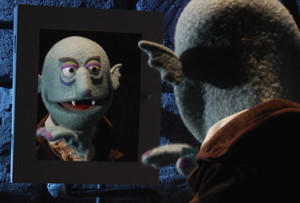
TRANSYLVANIA TELEVISION’s broadcast activities are led by the tyrannical vampire Volodymyr LeShoc (performed by Charles Hubbell).
In charge of this group is TVTV’s head honcho, the bloodsucking broadcaster Volodymyr LeShoc (performed by Charles Hubbell).
Accompanied by his B-movie loving assistant Irving J. Batfink (Laszlo Nemesi), Volodymyr runs TVTV’s operation with an iron…fang. On the air, TVTV’s staff includes talk show host Esmerelda The Gypsy (Renee Werbowski), and its chief booth announcer/one-time crypt guardian Cryptomicus (Michael Heagle).
Behind the scenes, new station intern/Albino yeti Furry Ackermonster (Gordon Smuder) gets his first taste of small time TV when he’s teamed with Russian ex-pat turned TVTV broadcast control computer B.O.R.I.S. (Michael Huyck), brainy disembodied secretary Ms. Mansfield (also performed by Werbowski), and head financial bookkeeper Archie Leech (Troy LaFaye).
Occupying TVTV’s facilities are such ghoulish figures like the demonic car pinstriper Hannibal Von Bucket (played by Jeff Neppl), and the drop dead gorgeous Egyptian mummy Kim Ho Tep (performed by Werbowski and Smuder). Meanwhile, the diabolical LeShoc transforms the washed-up, gorilla costume-clad Gorzon The Cosmic Destroyer (also played by Smuder) from actor to android.
With something for puppet lovers, geeks, horror/sci-fi fans and nostalgia nuts alike, TRANSYLVANIA TELEVISION has universal appeal. “We have really lovable and endearing characters that I think people fall in love with,” says LaFaye, who while not working on TVTV, serves as a video production instructor at Minneapolis’ IPR College of Creative Arts. “Like STRANGER THINGS, much of our humor comes from bygone years of pop culture and the nostalgia factor is very, very appealing for people.”
“I don’t think we’re ‘just’ for geeks,” adds Smuder. “Anybody who watched TV from 1950 onward has seen puppets on TV. Most people just think about The Muppets and SESAME STREET, but puppets and puppetry are still being used right now on TV regularly. We all grew up relating to puppets on TV. So now, we are all adults, and we are still relating to puppets on television. I think TVTV can appeal to a super wide audience. It just needs to be seen beyond people who Google for it!”

“What’s this thingy do?” L-R: TVTV characters B.O.R.I.S., Furry, Batfink, LeShoc and Dwayne Frankenstein find out in the episode “The Night of the Thingy”.
Ensuring that its comedy doesn’t go over the head of its viewers, TVTV’s creators poke fun at iconic pop culture cornerstones throughout the show.
“In many ways, since the show is so referential, we have to rely somewhat heavily on our influences – it’s what we mine for our material,” LaFaye replies. “A lot of the stories we do are actually mash-ups or parodies of movies and TV shows that we grew up watching in the 70’s, 80’s and 90’s. Netflix’s (hit sci-fi series) STRANGER THINGS is more of a documentary than a sci-fi show for us.”
Though TRANSYLVANIA TELEVISION’s puppets and sci-fi movie/TV spoofs are apparent upon first watch, it shares some noticeable comedic traits with a Twin Cities TV favorite that became a national cult sensation on late night cable. “…If we had to compare the type of humor in TVTV to another show, it’s probably closest to MYSTERY SCIENCE THEATER 3000 (MST3K) in a couple of ways,” explains LaFaye, a fan of the Comedy Central series since his college years.
To be clear, though – TRANSYLVANIA TELEVISION has never intended to merely be a copy of MST3K. “I don’t think there has ever been any conscious attempt at trying to be like MST3K, just that that was already the kind of humor we liked,” LaFaye says. “It was the same stuff we joke around with between takes on set. It’s just stuff that we think is funny; that we have a connection to. It just happens to be very similar to what MST3K was/is doing.”
Side by side, TVTV and MST3K go for the laughs in equal fashion. “Much of the humor in both shows (MST3K and TVTV) is referential, especially to other things in pop culture. We both speak in this weird pop culture language,” LaFaye comments. “The jokes work on multiple levels. There is stuff that is just stupid and silly, and other stuff that you actually have to think about to understand.”
Easily understood is the list of what you won’t see on TRANSYLVANIA TELEVISION: “We don’t do musical numbers. The Muppets do that and they do it better than just about anybody, so we avoid it,” says Smuder. “We also don’t have live humans in the show. It’s a puppet universe. That leads to the biggest difference: we don’t call out the fact that these are puppets. They are characters performing a story. If we have famous real-world people in the show, they will be represented by a puppet of themselves (see William Shatner in the Halloween Special!).”

L-R: Furry Ackermonster (played by Gordon Smuder) and Dwayne Frankenstein (Michael J. Heagle) stand by to hear the results of a radio contest in the TVTV episode “Dark Night Of The Ejaculatron”.
Compared to more raunchy movies and TV shows with puppet characters, TRANSYLVANIA TELEVISION offers a more refined kind of adult humor.
“Of the few examples of this (adult puppet shows) you can find out there right now – the biggest thing I see is that a lot of people seem to think that puppets for adults means potty-mouth puppets or dirty puppets. Like vulgarity is the only criteria for being enjoyable to adults. We don’t do that,” LaFaye replies. “We lean towards it, but it never goes too far, I don’t think.”
While its main puppet protagonists evolved, the foundational story elements of TRANSYLVANIA TELEVISION were formed by Smuder and Heagle. “The initial concept (of the show) was based solely on the puppets we had and could make in a reasonable amount of time,” says Smuder. “Michael (Heagle) and I went back and forth with details, but I’m pretty sure the nugget was Furry (at that time not a Yeti but just an orange monster) and LeShoc (at that time not even wearing clothes!) and a spooky old castle.”
As Furry and his cohorts made their debut during a public showing of the classic 1967 B-grade horror flick SPIDER BABY, Smuder and Heagle brainstormed possibilities for those characters on TRANSYLVANIA TELEVISION. Remembers Heagle: “(The concept) quickly developed into ‘how about a TV station,’ since it gave us the creative license to do movie and show parodies along with backstage hijinks, enabling us to use a STAR TREK sketch Gordon had made independently of the show.”
As TVTV’s producers/puppeteers continued to figure out the best way for their characters to be put to good use, Smuder discusses how a weekend filming session would finally put the show’s creators on the path to developing its comedic approach. “We did a test shoot one Saturday. We took several characters into a small studio space and just shot a bunch of ad-libby junk. The results were good enough that we decided a narrative show (a sitcom, explains Smuder) was achievable. So, we went with it.”

L-R: TVTV characters LeShoc and Batfink.
While Smuder and Heagle use the Muppets as a model for TVTV’s funny puppet characters, their work is also influenced by many of the TV age’s most famous puppeteers.
Says Smuder: “…What people may not recognize so quickly is our stylistic connection to other puppet producers like the great Sid & Marty Krofft, Wayland Flowers (and his puppet sidekick, Madame) and Shari Lewis – all of whom did family-friendly work, but (who) also created material for an adult audience.”
In a period where the web series medium was still maturing, TRANSYLVANIA TELEVISION’s concept was strictly made to fit the constraints of commercial broadcast TV. “The show was originally (conceived) as a traditional ‘half-hour broadcast’ comedy show,” LaFaye says. “At the time, the prevailing (and incorrect) knowledge was that if you wanted to create a new show and have it get “picked up” by a network, you created a pilot episode and shopped it around. In 2007, (we) shot and completed a pilot episode.”
The TVTV pilot aired on Channel 23, Minneapolis-St. Paul station WUCW – the same station where MST3K first premiered in 1988 (back then, the station’s call letters were KTMA). Afterward, it was shopped to several networks and studios – including Cartoon Network’s Adult Swim division – with no success.
Undeterred, TRANSYLVANIA TELEVISION’s scribes sought to create new shenanigans for the monsters they created. “…We gathered a group of writers and started trying to develop half-hour scripts for future episodes,” LaFaye adds. “The idea at the time was that these would be primarily linear stories, with an arc both within each episode, as well as across an entire season.”
When TVTV’s pilot episode found no takers, the old-fashioned approach that LaFaye and crew attempted to take in structuring their series would go out the window. Why? “There was this new fangled inter-web page called YouTube that was starting to become very popular at the time,” he explains. “As a result, ‘viral video’ and ‘webisode’ were starting to become a thing. We were pretty narratively traditional, so at first (we) had kind of a ‘get off my lawn’ approach to it.”
Quickly, TVTV’s producers learned how to adapt to the new world of new media. Remarks LaFaye: “We realized that the new video capabilities of the Internet could allow us to build a bigger audience, and since the prevailing wisdom was that episodes that were best consumed in 2 to 7 minute long bites, we could afford to continue producing short episodes, paying for them out of our pockets.”

L-R: Von Bucket, Furry and Batfink peruse some very interesting literature on TRANSYLVANIA TELEVISION.
Restructuring what would have been a half hour sitcom into easy-to-digest webisodes for the Funny or Die generation, TVTV’s writers and producers would eventually see the rewards of that change. During that process (of putting the show on Youtube), we somehow hooked in to the Thatguywiththeglasses/Channel Awesome,” LaFaye says. “This brought a lot more eyes to the project, and with them, more views.”
Though the audience figures were modest for its first 2 seasons, TVTV was winning much praise from its viewers. “I think at one point we logged over 8,000 views for one episode, which was still a mere drop in the digital bucket,” remembers LaFaye. “For the most part, the people that liked us – really, really liked us. They ‘got’ us. (They) frequently expressed (and still do) that they wondered where we had been all their lives. And yet – still the numbers were tiny, tiny, tiny blips on the web traffic radar.”
While TRANSYLVANIA TELEVISION was scaring up an audience online, old media stalwarts were still unconvinced of its potential. LaFaye compares their reactions to those of the many network execs who doubted the viability of shows like THE SIMPSONS and SOUTH PARK. “The feedback we were getting from the handful of industry people we had gotten the show in front of was either ‘not for us’ or ‘sorry, but puppets are for kids.’ I’ve never understood this thinking,” he explains.
Another game-changing platform propelled TVTV’s producers to take another shot at broadcast television: an hour-long Halloween special. “Right around then (2008-09), another new web site had popped up called: Kickstarter,” remembers LaFaye. “We created a campaign, and between that Kickstarter and selling local ads to companies in the Twin Cities area, we raised around $14,000. With that, we were able to rent a small studio space of our own, purchase new set building material and buy air time (for the Halloween special) on the (Minneapolis) CW affiliate again (in 2010).”
While Smuder, Heagle and the other producers envisioned their latest over-the-air venture as a perennial holiday broadcast, the TVTV Halloween special was met with the same resistance as their original pilot. The reason? “We were told by several people – you need at least a ‘season’s’ worth of a show to make it worth the while of the network/station,” LaFaye explains.
TVTV would finally get a chance to prove itself to those networks and stations through an arrangement between the show’s producers and the owner of several low-power TV outlets in Houston; someone who just happened to be a relative of TRANSYLVANIA TELEVISION producer Clarke Stone. “(We pitched) an idea to the relative, who agreed to air 7 half-hour episodes on rotation for a month – in exchange for providing demographic and ratings data that we could then use to leverage advertisers,” says LaFaye.

A poster promotes TRANSYLVANIA TELEVISION’s special Halloween episode, which originally aired in 2010.
In addition to a 2-part version of the TVTV Halloween special, 5 half-hour episodes of TVTV were constructed from several sources. LaFaye describes how they were created: “In the spring of 2012, we then began working on what we called ‘The Houston 5’. Five broadcast half-hour episodes that would consist of: the best sketches from the 2.5 seasons of YouTube episodes, re-shot episodes from the same time period, old scripts that had not yet been shot, and new sketches that we had just developed.”
Adds LaFaye: “These episodes were a combination of story arc and stand-alone sketches, and most of the scripts we had developed for the third YouTube season were incorporated into the broadcast episodes instead.”
LaFaye, Smuder and Heagle would later hook up with someone who offered to get TVTV into even more households. Yet, despite distribution deals with several small scale independent networks, the needed ad revenue and national sponsorships failed to materialize.
“Besides the Houston stations, we know we played on affiliates of TUFF-TV networks and AMG Networks, but didn’t get a single shred of demographic or ratings information,” says LaFaye. The lack of that information severely handicapped the producers’ attempts to win major advertisers for TVTV.
With their efforts to win over broadcasters and ad agencies stalled, LaFaye, Smuder and Heagle kept TVTV’s characters alive through live UStream chats and introductions to local Minneapolis screenings of THE MUPPET MOVIE and the “so-bad-it’s good” ‘70s TV schlock fest THE STAR WARS HOLIDAY SPECIAL. DVD sales of past seasons helped to pay for studio expenses, as did later distribution hook-ups with Amazon Prime, U.K. based FilmVolt, Tubi.TV and Hoopla. Unfortunately, those earnings would not be enough to keep TVTV’s filming afloat.
With TVTV’s future uncertain, it took a meeting with one of LaFaye’s newest students to help get TRANSYLVANIA TELEVISION back up to full power. “A few years ago (in 2015), George Reese (co-founder of seeka.tv) signed up to take my Production Management class at IPR,” remembers LaFaye.
“In talking with George outside of class, he mentioned he was working on launching a new streaming company, and was looking for local, independently-produced web series – both to provide existing content to populate the new site, but also to fund new content made exclusively for the site. I told him about TVTV, and he asked to see what we had so far.”

On the set of TRANSYLVANIA TELEVISION. Photo courtesy Matt Maas.
What Reese saw of TRANSYLVANIA TELEVISION impressed him enough to get the show signed up to his up-and-coming video venture. “He watched some of our stuff and really liked what he saw,” LaFaye adds.
“We worked out a deal where Seeka.tv would get non-exclusive use of our existing material, plus they would fund a certain number of new episodes, which, in turn, they would get an exclusive license on for a limited time. The money wasn’t a huge amount, but thanks to a perfect storm of circumstances, we found a way to do three new shows.”
From LaFaye’s perspective, Seeka TV’s financial and creative infrastructure makes that platform a perfect partner for TRANSYLVANIA TELEVISION. ”First of all – they gave us money for production. While still a relatively small amount, it at least meant we did not have to deficit spend to get anything made, and with the exception of a Kickstarter for the Halloween Special, we’ve not had an outside source of funding production,” says LaFaye.
Compared to its bigger competitors, Seeka nurtures and encourages filmmakers like Smuder, Heagle and LaFaye by allowing them to work without overt interference from executives.
“George’s and Seeka’s philosophy is fiercely independent,” LaFaye responds. “They believe very strongly in supporting projects that were not created by the traditional entertainment content engine, and (they) also believe in giving filmmakers the room/freedom to create their projects as they see fit. Seeka never asked to see any scripts, or for editorial approval. They had seen what we could do and trusted we would/could deliver a quality show.”
After the show’s producers signed with Seeka in October 2016, students of IPR’s Digital Video & Media Production Program would help rebuild TVTV’s castle and characters for the show’s latest episodes. While its past episodes were shot in various leased studios, TVTV’s Seeka-backed shows were produced from May-June 2017 at IPR’s facilities. It was all part of an arrangement that exchanged low-cost usage of the studios for allowing IPR’s students to participate in the show’s production.
“Video Students helped build the set, worked as production assistants during the shoot and Audio program students recorded most of our ADR/Voiceover tracks in one of IPR’s state-of-the-art audio recording studios,” says LaFaye, who describes the positive impact that his team would make on IPR’s young filmmakers and audio engineers during their partnership with TVTV.

L-R: Puppeteers/performers Gordon Smuder (as Batfink) and Charles Hubbell (as Count LeShoc). Photo courtesy Matt Maas.
“Our set builder, our gaffer and Gordon all came in to one of the video production classes as guest speakers. The students got actually hands-on experience in production. It made a huge difference for us, the school and the students.”
The show’s producers owe the success of TRANSYLVANIA TELEVISION to both Seeka’s Reese, and the talented specialists who helped keep things moving on the show’s set. As LaFaye puts it: “We have a very small crew. An amazingly talented cast. We work really fast and efficiently, and we all get along really, really well. It’s really rare that you can find a group of people who are this close to all being on the same page,” he says. “We also seem to have a really complementary skill set between all of us.”
Behind the scenes, TVTV’s production organization has remained surprisingly consistent over its 10 years. “It’s pretty much the same process as any film production, with the major exception being that everything is up off the ground so that the puppeteers can fit under them, and they have to use monitors to see what their character looks like on screen,” LaFaye explains. “We don’t do a lot of green screen, with this last batch, really only a few shots were green screen. Michael, and/or his students, have done all of the visual effects.”
That said, some modifications would be made when the show was being repackaged for broadcast. “One thing we did change when we were preparing to do the ‘Houston 5’ was splitting the narrative between a story arc and stand alone sketches,” LaFaye remarks. “With the stand-alones, we could write several ‘Activities With Dwayne’ sketches for example, and then shoot them all at once. Not having to change over sets or characters or performers made shooting much, much more efficient.”
TRANSYLVANIA TELEVISION’s no-frills scenic presentation is equally striking. “(The look of TVTV) is lowbrow and kind of slick. A lot of web-based puppet stuff is really rough looking, and the characters lack visual appeal,” Heagle responds. “The world that our characters inhabit is fully formed and three-dimensional. You kind of know what’s around each corner in the castle.”
“Our show looks really good,” LaFaye exclaims. “Not that we don’t have places where we can improve, but compared to many other shows out there, we look really amazing – and that stands out to people right away. Several times I’ve had people comment that TVTV looks like a show that is already on television and they are baffled as to why it isn’t.”
How do you describe TRANSYLVANIA TELEVISION? Here’s the long and short of it: “I just recently found a quote Gordon gave in an old interview about what the show is like,” mentions LaFaye: “‘imagine The Muppets and SCTV at a Halloween party, getting drunk and then having a baby…that they don’t want, so they threw it in a dumpster and it was rescued by MYSTERY SCIENCE THEATER 3000. So, our show is kind of a dumpster baby rescued by (MST3K),’”In other words: “Put the kids to bed,” Smuder advises. “This (TVTV) is for YOU. Not them.”
(NOTE: LaFaye says that closed-captioning will soon be implemented on each episode of TRANSYLVANIA TELEVISION. “We will be adding it at some point.”)
SEEKA TV: http://watch.seeka.tv/tvtv
YOUTUBE: https://www.youtube.com/user/TVTVonline
ON THE WEB: transylvania-tv.com/
FACEBOOK: https://www.facebook.com/transylvaniatv/
TWITTER: https://twitter.com/tvtv

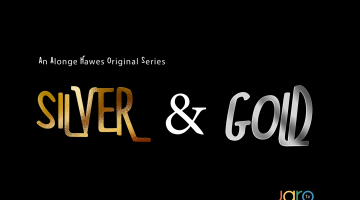



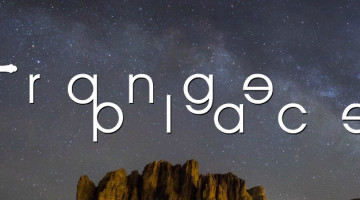
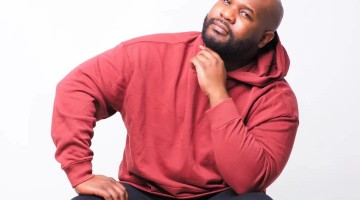
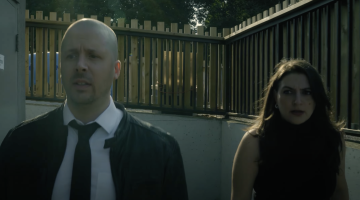
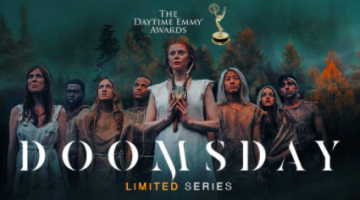

No Comment